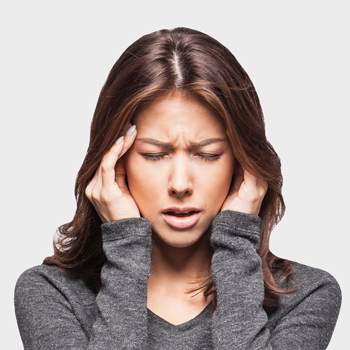Headache and Migraine Care in Perth CBD
 Patients have the option to seek out care from allied health professionals of which may include a chiropractor.
Patients have the option to seek out care from allied health professionals of which may include a chiropractor.
The chiropractor will have the knowledge to perform a case history and examination at the initial consultation. This is done to screen for the red flags of headache of which most cases are benign but if present will need to be managed appropriately.
Chiropractic care can be utilized with or without medication. To be used as a sole intervention or to or to have a synergetic effect with medications and exercise. The chiropractor will record any signs or symptoms of the headache present at time so it can be compared with new headaches changes that may occur in the future. The aim of Chiropractic care is to treat the individual patient and to increased neck range of motion, decrease pain from neck joints, the headache, any muscles involved, to lower headache frequency and disability.
What kind of headache do Chiropractors treat?
Chiropractors have the knowledge to diagnose and treat the most common forms of headache which can include tension, migraines and cervicogenic headaches but also can diagnose other forms of headaches so do them know if you have odd symptoms like jaw pain or pain radiating to the scalp!
How will I be treated?
The chiropractor will often treat headache patients with spinal manipulation to the mid back or neck with a focus at the upper neck where it does meet the skull. Spinal manipulation will often be used together with soft tissue therapies such as massage, graston or trigger point therapy to treat any muscles that may contribute to the pain of the headache. Exercise and nutritional advice can also be given as part of the headache treatment.
Is Chiropractic treatment effective?
Yes! Chiropractic care is effective. This is most evident for a type of headache called cervicogenic headaches. These headaches are often accompanied by neck pain and involve joints and muscles that are painful or dysfunctional in the neck. These headaches are often is present with neck pain is accompanied with the headache, reduced neck range of motion and is made worse with movements that compression the effect joints in the neck.
There is evidence from an article in 2022 (Rodríguez-Sanz, et al) that spinal manipulation of the upper neck improves the results of neck exercises for patients with cervicogenic headache suggesting a synergistic role of spinal manipulation with exercise!
For migraines and tension type headaches treatment of the local muscles of the head and neck maybe more important (Phu Do et al, 2018) together with nutritional advice than the spinal manipulation itself as there is mixed evidence for spinal manipulation and the treatment of these headaches.
There is also evidence for the treatment of specific muscles such as the upper trapezius, sternocleidomastoid and temporalis) in patients with migraines. Either with dry needling or trigger point therapy ((Rezaeian et al, 2020), (Olesiejuk et al, 2023).
Chiropractors also have the goal to manage poor neck posture especially that involving a loss of neck lordosis and head extension together with migraines that are associated with painful trigger points (Ferracini et al, 2016).
When patients are diagnosed with a headache type there can be subgroups within that category that may respond greatly, fairly and poorly to care. So, a trial of treatment is always offered to the patient, using multiple treatment interventions.
How many treatments will be needed?
As a course of antibiotics is prescribed to treat an infection by lowering bacteria in the body until there are no symptoms the patient still continues the course to treat any lingering bacteria and to prevent their multiplication and remove the infection.
In this same manner chiropractic treatments are usually given symptomatically and continually after once there are no symptoms to be more effective.
Although there is individual variability there is some evidence to guide the number of treatments given especially in that of chronic cervicogenic headaches.
An article in 2018, (Hass, et al) investigates the effectiveness of spinal manipulation alone on chronic cervicogenic headache of which the highest investigated dose of 18 treatments was the most effective (3 days a week for 6 weeks) of which the days of headaches were reduced by half and 3 more days/month compared to the light massage-control. This can then give use a guide for the number of treatments given for chronic cervicogenic headaches.
Providing Options for Managing Your Headaches
Our chiropractors at Central City Chiropractic utilise spinal manipulative therapy, muscle work including massage and trigger point therapy, posture correction and home exercises into their overall management of cervicogenic headache clients. We also like to make sure that once the headache is treated, we reduce the chance of if returning by looking at the original causes and addressing them. If headaches are making everyday tasks difficult, we want you to know that natural solutions are available. Contact us today for an appointment!
Headache Care Perth CBD | Central City Chiropractic | (08) 9221 4527
1. Biondi, D. Cervicogenic Headache: A Review of Diagnostic and Treatment Strategies. J Am Osteopath Assoc April 1, 2005 vol. 105 no. 4 suppl 16S-22S 2. Carnes M and N Vizniak 2009. Quick Reference Evidence-Based Conditions Manual. Canada Professional Health Systems Inc. 3. Bronfort et al. Effectiveness of manual therapies: the UK evidence report. Chiropractic & Osteopathy 2010, 18:3

